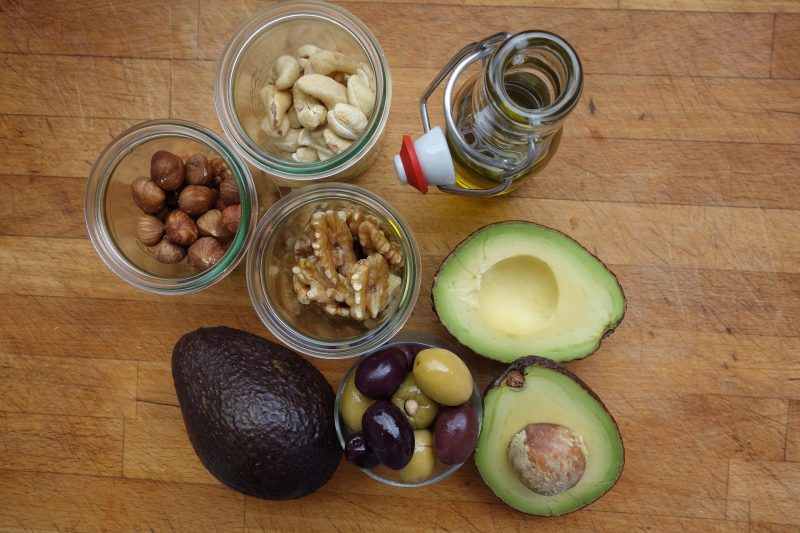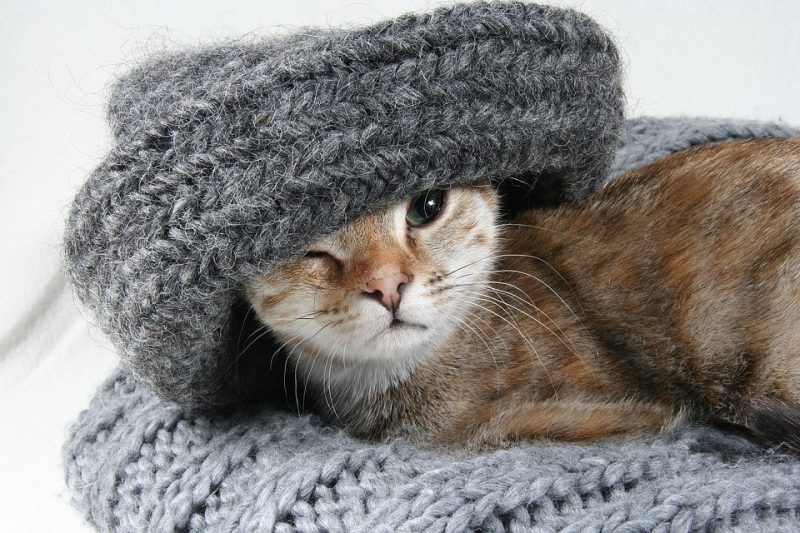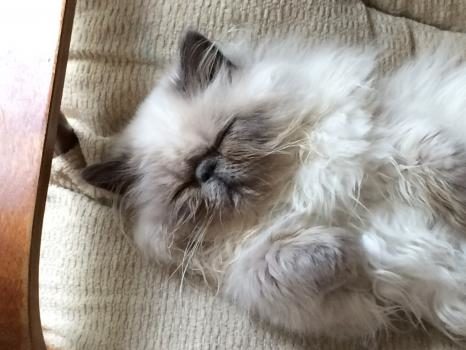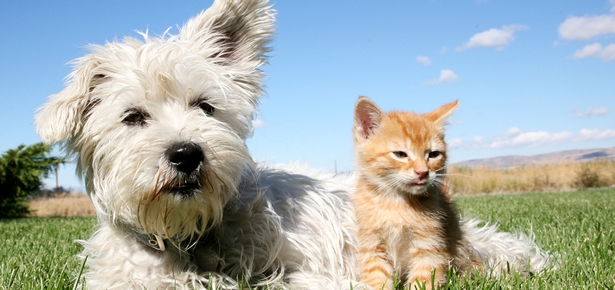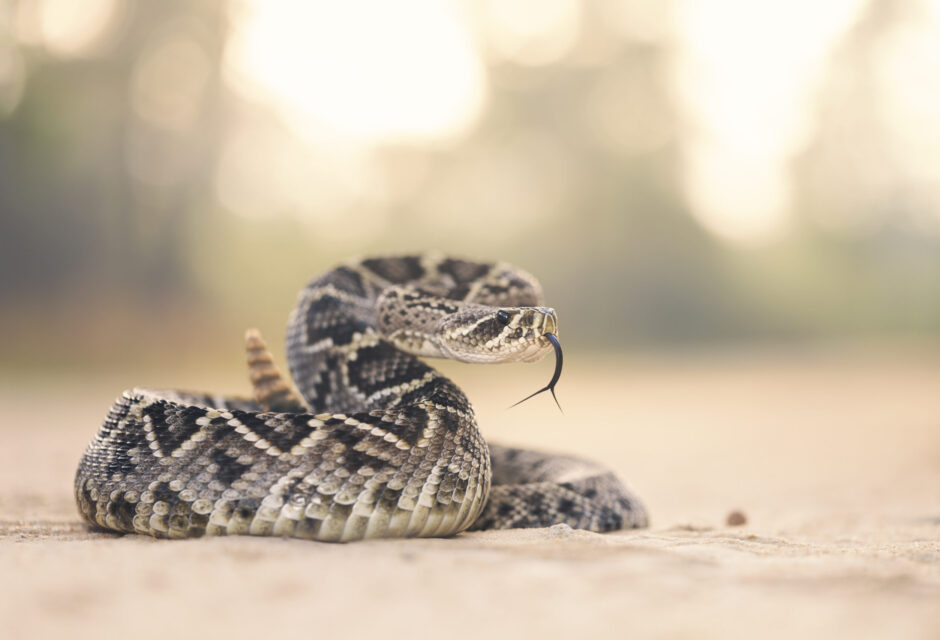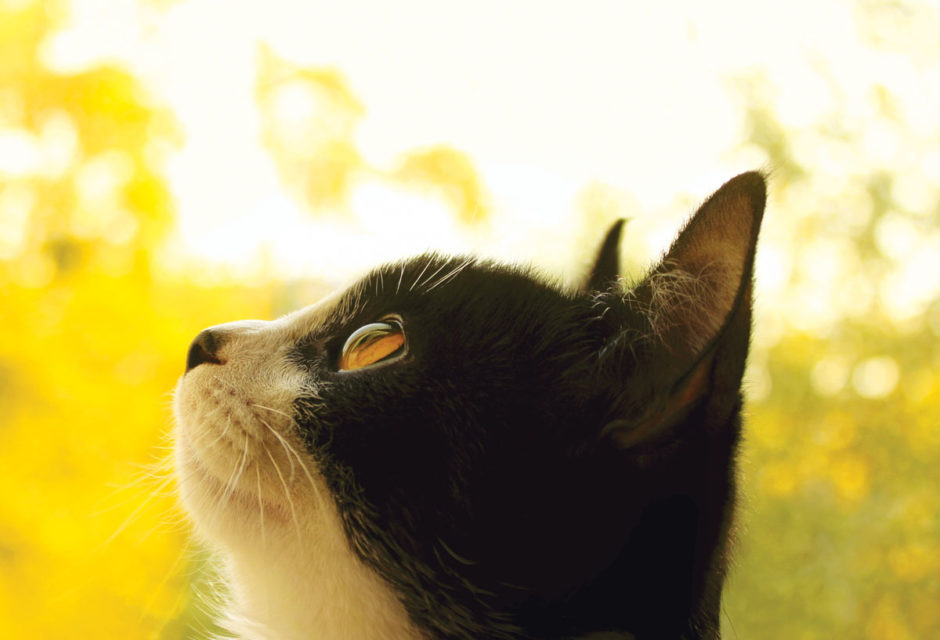

Conscious Living & Your Cat
How to bring more mindfulness to your relationship with your cat—and your life in general
If you’re trying to live your life in a more mindful manner, from the purchases you make to the way you interact with your cat, Ingrid King might just offer the inspiration you’ve been looking for. Not only is Ingrid the founder and publisher of The Conscious Cat (ConsciousCat.com), she has authored five award-winning books about felines, including Purrs of Wisdom: Enlightenment, Feline Style. Her philosophy, “conscious living, health, and happiness for cats and their humans” is applied here in the advice she offers for making thoughtful choices, tuning into your cat’s wild essence, and being present with your cat. Ingrid reminds us not to make the mistake of thinking cats are self-sufficient: “At the core of every happy cat is a happy relationship with his or her human. It’s up to the human in this relationship to provide what it takes to keep cats healthy physically, mentally, and emotionally.” Read on for her top tips for conscious living, as applied to our beloved cats.
Q: What are the most common misunderstandings people have of their cats?
A: People tend to forget that at their heart, even our domestic cats are still only a whisker away from their wild origins. We bring these cats into our homes and expect them to conform to our way of life, and then we’re surprised when we wind up with cats with behavioral problems. We need to give cats a chance to be cats and not treat them as little people. Unless we allow them to express their wild instincts, they’re not going to be happy. One of the best ways to allow them to get in touch with their inner wild cat is through play. It appeals to their natural hunting instinct, and it’s also a wonderful way for us to bond with them.
What are your top three must do’s for a happy cat?
A: A species-appropriate diet, an enriched environment, and plenty of time to play. Vertical space is an absolute must, especially in multi-cat households. Cat trees, elevated walkways, and perches increase the available territory and allow cats to get away from each other.
Cats are obligate carnivores and they need meat not just to survive, but to thrive. A species-appropriate diet is high in protein and contains less than five percent carbohydrates. A raw diet is ideal, but raw feeding may exceed the comfort level for some cat parents. The next best thing would be a gently cooked whole food diet, followed by a premium grain-free canned diet. Cats should never eat dry food. Even the premium brands are too high in carbohydrates for an obligate carnivore.
How can people improve their relationship and deepen their bond with their cat? Are there particular areas they should focus on?
A: Play is probably the biggest area that gets neglected. Everyone is always so busy, plus cats have this reputation of being self-sufficient and not needing much social interaction, which couldn’t be further from the truth. Playing with your cat is one of the best ways to increase and enhance the bond. I recommend structured play sessions, two or three times a day, 10 to 15 minutes, using interactive wand-type toys. Get creative and have fun with these play sessions. They’re not only a wonderful way to bond with your cat, but they’re also a great stress reliever!
“Play is probably the biggest area that gets neglected.”
Many people are confounded by their cat’s behavior. How can people better get into the mind of their cat and understand their cat’s motivations?
A: We need to remember that cats are wild animals at heart. Jackson Galaxy calls this the “raw cat,” the concept being that inside every house-cat live the instincts of his or her wild ancestors. If we truly want to understand cats and their motivations, we need to work at understanding this aspect of the cat’s way of being in the world. Never lose sight of the cat’s true nature. Even our domesticated cats are still hunters at heart.
You’ve authored a book called Tortitude: the Big Book of Cats With Big Attitude. What exactly is tortitude?
A: Ah, tortitude! The term describes some of the unique traits that many of these beautifully colored cats seem to share: they tend to be strong-willed, a bit hot-tempered, and they can be very possessive of their human. Other words used to describe torties are fiercely independent, feisty, and unpredictable. They’re usually very talkative and make their presence and needs known with anything from a hiss to a meow to a strong purr.
What can we learn from our cats and how can they help with conscious living?
A: I think cats are amazing teachers. First and foremost, they teach us to live in the moment, which to me, is really the ultimate lesson for most of us. On a more practical level, they also teach us to relax, make more time for play, and not to take life so seriously. On a deeper level, I also believe that cats (and all animals) help us connect with our spiritual side. Animals are so much closer to nature than we are, and as such, are much more in touch with spirits than most humans. Simply observing a cat can instantly transport me into a state of connection.
Conscious living has long been a guiding principle for me in my life, long before I started The Conscious Cat. It means making choices that are in alignment with who we really are at our core. We make choices about everything we do all day long, from the food we eat and feed our cats, to the products we use on ourselves and in our environment. The more we make these conscious choices, the more whole our lives will become, and the happier we will be—and so will our cats. I believe that there are three components of conscious living: health and nutrition, environment, and mental, emotional, and spiritual health. We have to attend to all three of them, for ourselves and for our cats, to ensure that we live a balanced and happy life.
Join the newsletter and never miss out on cat content again!
"*" indicates required fields
By clicking the arrow, you agree to our web Terms of Use and Privacy & Cookie Policy. Easy unsubscribe links are provided in every email.





